Exposure Modelling of Extremely Low-Frequency Magnetic Fields from Overhead Power Lines and Its Validation by Measurements
Abstract
:1. Introduction
2. Materials and Methods
2.1. Model
2.1.1. Calculation Methods
2.1.2. Load Data
2.1.3. Geometric Data
2.1.4. Error Estimates and Simplifications
2.1.5. Computations for Validation
- List of the coordinates of tower positions x and y (and later also z)
- Mast-schemas for all masts, one drawing per mast
- Drawings of isolators
- Phase-allocation schema for all circuits
- Graphics/tables on line sag, for all spans
- Load flow data (time, voltage, active power, and reactive power) as 15 min averages for the measurement periods and 1 h averages for the whole year 2015 from Swissgrid and in part also from BKW.
- Two different digital terrain models: (1) the DHM25 with 25 m resolution, and (2) the more precise model DHM5 with 5 m resolution.
- Model A: gives the arithmetic average using the 25 m resolution terrain model DHM25.
- Model B: gives the RMS mean using the 25 m resolution terrain model DHM25.
- Model C: gives the arithmetic average using the 5 m resolution terrain model DHM5.
- Model D: gives the RMS mean using the 5 m resolution terrain model DHM5.
2.2. Measurements
2.2.1. Selection of Sites for Validation
2.2.2. Measurement Procedures
- Emdex II. Seven devices were placed at distances 0 to ±40 m.
- Estec DL-MW10s. One device was placed at distance 0 m together with an Emdex II, and a second one was used as a spare and for spot measurements.
- Estec EMLog2e. Two devices were placed at ±80 m, as they have higher sensitivity and resolution than the Emdex II and DL-MW10s.
3. Results
3.1. Pilot Study
3.2. Modeling
3.3. Measurements
3.4. Comparison between Measurements and Modelling
Statistical Evaluation of Model Uncertainty
4. Discussion
5. Conclusions
Supplementary Materials
Acknowledgments
Author Contributions
Conflicts of Interest
Appendix A
| Emdex II | ESTEC DL-MW 10s | ESTEC EMLog 2e | |
|---|---|---|---|
| Manufacturer | EMDEX-LLC (www.emdex-llc.com) | ESTEC (www.estec.de) | |
| Measurement range | 300 μT | 130 μT | 10 μT |
| Resolution | 10 nT | 10 nT | 1 nT |
| Precision | ±3% (overall) ±10% (worst case) | ±3%, ±10 nT (one axis) | ±3%, ±1 nT (one axis) |
| Axis-directions | Y-axis parallel to long side of devices | X-axis parallel to long side of devices | |
| Frequency bands | Broadband: 40–800 Hz Harmonics: 100–800 Hz | 5–30 Hz 37–2000 Hz | |
| Data rate | 1.5–327 s | 1 s | |
| Battery-capacity 1 | ca. 90 h | 7 days | |
| Number of data points, Recording-period 1 | 15,000 <62 h | 5,500,000 7 days | |
| Power source | 9V Alkaline battery | Li-Ion, chargeable via USB-cable | |
| Data storage | Data deleted on power-off | Permanent storage | |
| Operating temperature range | 0–60 °C | 0–40 °C | |
References
- Wertheimer, N.; Leeper, E.D. Electrical wiring configurations and childhood cancer. Am. J. Epidemiol. 1979, 109, 273–284. [Google Scholar] [CrossRef] [PubMed]
- Kheifets, L.; Shimkhada, R. Childhood leukemia and EMF: Review of the epidemiologic evidence. Bioelectromagnetics 2005, 26, S51–S59. [Google Scholar] [CrossRef] [PubMed]
- Ahlbom, A.; Day, N.; Feychting, M.; Roman, E.; Skinner, J.; Dockerty, J.; Linet, M.; McBride, M.; Michaelis, J.; Olsen, J.H.; et al. A pooled analysis of magnetic fields and childhood leukaemia. Br. J. Cancer 2000, 83, 692–698. [Google Scholar] [CrossRef] [PubMed]
- Greenland, S.; Sheppard, A.R.; Kaune, W.T.; Poole, C.; Kelsh, M.A. A pooled analysis of magnetic fields, wire codes, and childhood leukemia. Childhood Leukemia-EMF Study Group. Epidemiology 2000, 11, 624–634. [Google Scholar] [CrossRef] [PubMed]
- Kheifets, L.; Ahlbom, A.; Crespi, C.M.; Draper, G.; Hagihara, J.; Lowenthal, R.M.; Mezei, G.; Oksuzyan, S.; Schüz, J.; Swanson, J.; et al. Pooled analysis of recent studies on magnetic fields and childhood leukaemia. Br. J. Cancer 2010, 103, 1128–1135. [Google Scholar] [CrossRef] [PubMed]
- Draper, G.; Vincent, T.; Kroll, M.E.; Swanson, J. Childhood cancer in relation to distance from high voltage power lines in England and Wales: A case-control study. BMJ 2005, 330. [Google Scholar] [CrossRef] [PubMed]
- Crespi, C.M.; Vergara, X.P.; Hooper, C.; Oksuzyan, S.; Wu, S.; Cockburn, M.; Kheifets, L. Childhood leukaemia and distance from power lines in California: A population-based case-control study. Br. J. Cancer 2016, 115, 122–128. [Google Scholar] [CrossRef] [PubMed]
- Bunch, K.J.; Keegan, T.J.; Swanson, J.; Vincent, T.J.; Murphy, M.F.G. Residential distance at birth from overhead high-voltage powerlines: Childhood cancer risk in Britain 1962–2008. Br. J. Cancer 2014, 110, 1402–1408. [Google Scholar] [CrossRef] [PubMed]
- Schüz, J.; Dasenbrock, C.; Ravazzani, P.; Röösli, M.; Schär, P.; Bounds, P.L.; Erdmann, F.; Borkhardt, A.; Cobaleda, C.; Fedrowitz, M.; et al. Extremely low-frequency magnetic fields and risk of childhood leukemia: A risk assessment by the ARIMMORA consortium: Risk Assessment ELF-MF and Childhood Leukemia. Bioelectromagnetics 2016, 37, 183–189. [Google Scholar] [CrossRef] [PubMed]
- International Agency for Research on Cancer (IARC). Non-Ionizing Radiation Part 1: Static and Extremely Low Frequency (ELF) Electric and Magnetic Fields; World Health Organization: Geneva, Switzerland, 2002; pp. 1–397. [Google Scholar]
- Scientific Committee on Emerging and Newly Emerging Health Risks, SCENHIR; Potential Health Effects of Exposure to Electromagnetic Fields (EMF). 2015. Available online: https://ec.europa.eu/health/scientific_committees/emerging/docs/scenihr_o_041.pdf (accessed on 7 August 2017).
- Huss, A.; Spoerri, A.; Egger, M.; Roosli, M.; Swiss National Cohort Study. Residence near power lines and mortality from neurodegenerative diseases: Longitudinal study of the Swiss population. Am. J. Epidemiol. 2008, 169, 167–175. [Google Scholar] [CrossRef] [PubMed]
- Frei, P.; Poulsen, A.H.; Mezei, G.; Pedersen, C.; Cronberg Salem, L.; Johansen, C.; Roosli, M.; Schuz, J. Residential distance to high-voltage power lines and risk of neurodegenerative diseases: A Danish population-based case-control study. Am. J. Epidemiol. 2013, 177, 970–978. [Google Scholar] [CrossRef] [PubMed]
- Baliatsas, C.; Bolte, J.; Yzermans, J.; Kelfkens, G.; Hooiveld, M.; Lebret, E.; van Kamp, I. Actual and perceived exposure to electromagnetic fields and non-specific physical symptoms: An epidemiological study based on self-reported data and electronic medical records. Int. J. Hyg. Environ. Health 2015, 218, 331–344. [Google Scholar] [CrossRef] [PubMed]
- Bürgi, A. Immissionskataster für Niederfrequente Magnetfelder von Hochspannungsleitungen—Machbarkeits und Pilotstudie. 2011. Available online: https://www.bafu.admin.ch/bafu/de/home/themen/elektrosmog/fachinformationen/elektrosmog-belastung.html (accessed on 10 July 2017). (In German).
- Bürgi, A. Validierung der Methodik Immissionskataster für niederfrequente Magnetfelder von Hochspannungsleitungen. 2016. Available online: https://www.bafu.admin.ch/bafu/de/home/themen/elektrosmog/fachinformationen/elektrosmog-belastung.html (accessed on 10 July 2017). (In German).
- Feynman, R.P.; Leighton, R.B.; Sands, M. The magnetic field in various situations. In The Feynman Lectures on Physics; Addision Wesley: Middlesex, MA, USA, 1964; pp. 14-1–14-5. [Google Scholar]
- MacKay, D.J. Information Theory, Inference and Learning Algorithms; Cambridge University Press: Cambridge, UK, 2003. [Google Scholar]
- Zaffanella, L. Electric and magnetic fields. In EPRI AC Transmission Line Reference Book—200 kV and above, 3rd ed.; Electric Power Research Institute: Palo Alto, CA, USA, 2005. [Google Scholar]
- Vergara, X.P.; Kavet, R.; Crespi, C.M.; Hooper, C.; Silva, J.M.; Kheifets, L. Estimation magnetic fields of homes near transmission lines in the California power line study. Environ. Res. 2015, 140, 514–523. [Google Scholar] [CrossRef] [PubMed]
- Struchen, B.; Liorni, I.; Parazzini, M.; Gängler, S.; Ravazzani, P.; Röösli, M. Analysis of personal and bedroom exposure to ELF-MFs in children in Italy and Switzerland. J. Expo. Sci. Environ. Epidemiol. 2016, 26, 586–596. [Google Scholar] [CrossRef] [PubMed]
- Swanson, J. Magnetic fields from transmission lines: Comparison of calculations and measurements. IEE Proc. Gener. Transm. Distrib. 1995, 142, 481–486. [Google Scholar] [CrossRef]
- Swanson, J. Methods used to calculate exposures in two epidemiological studies of power lines in the UK. J. Radiol. Prot. 2008, 28, 45–59. [Google Scholar] [CrossRef] [PubMed]
- Röösli, M.; Jenni, D.; Kheifets, L.; Mezei, G. Extremely low frequency magnetic field measurements in buildings with transformer stations in Switzerland. Sci. Total Environ. 2011, 409, 3364–3369. [Google Scholar] [CrossRef] [PubMed]
- Stratmann, M.; Wernli, C.; Kreuter, U.; Joss, S. Messung der Belastung der Schweizer Bevölkerung durch 50 Hz Magnetfelder; Paul-Scherrer-Institut: Würenlingen, Switzerland, 1995. (In German) [Google Scholar]
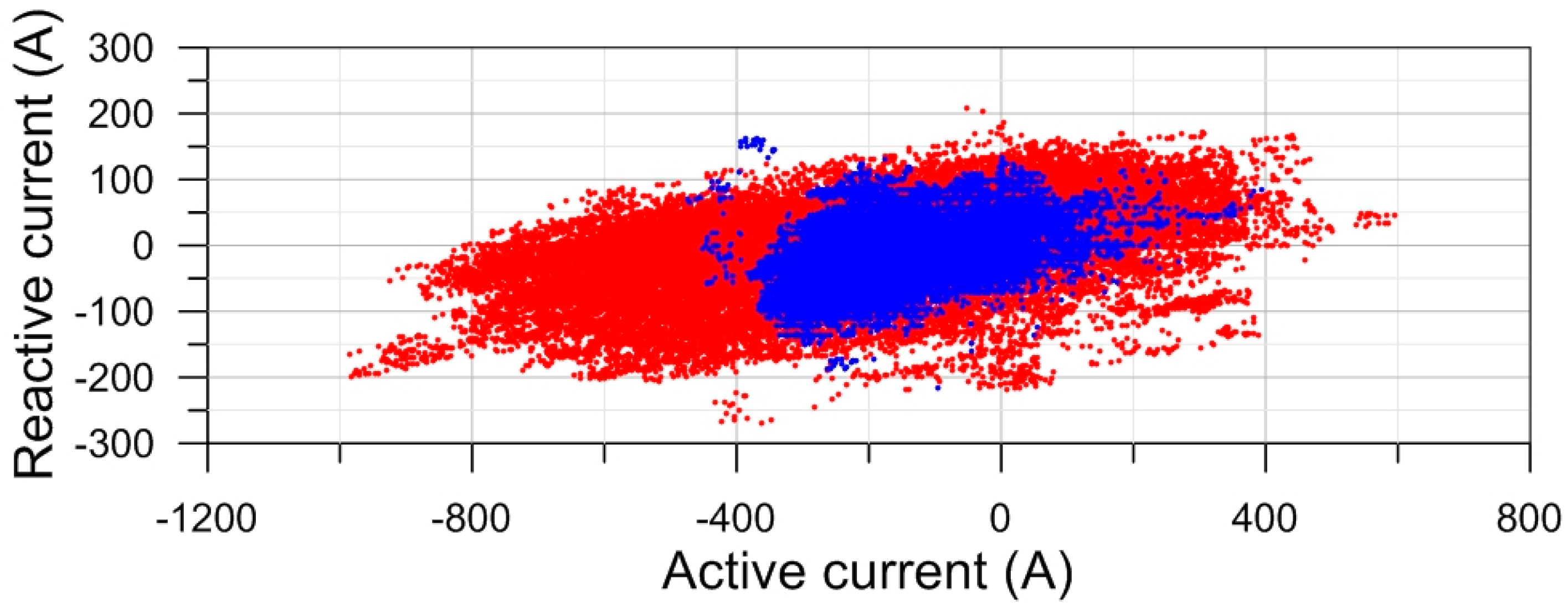
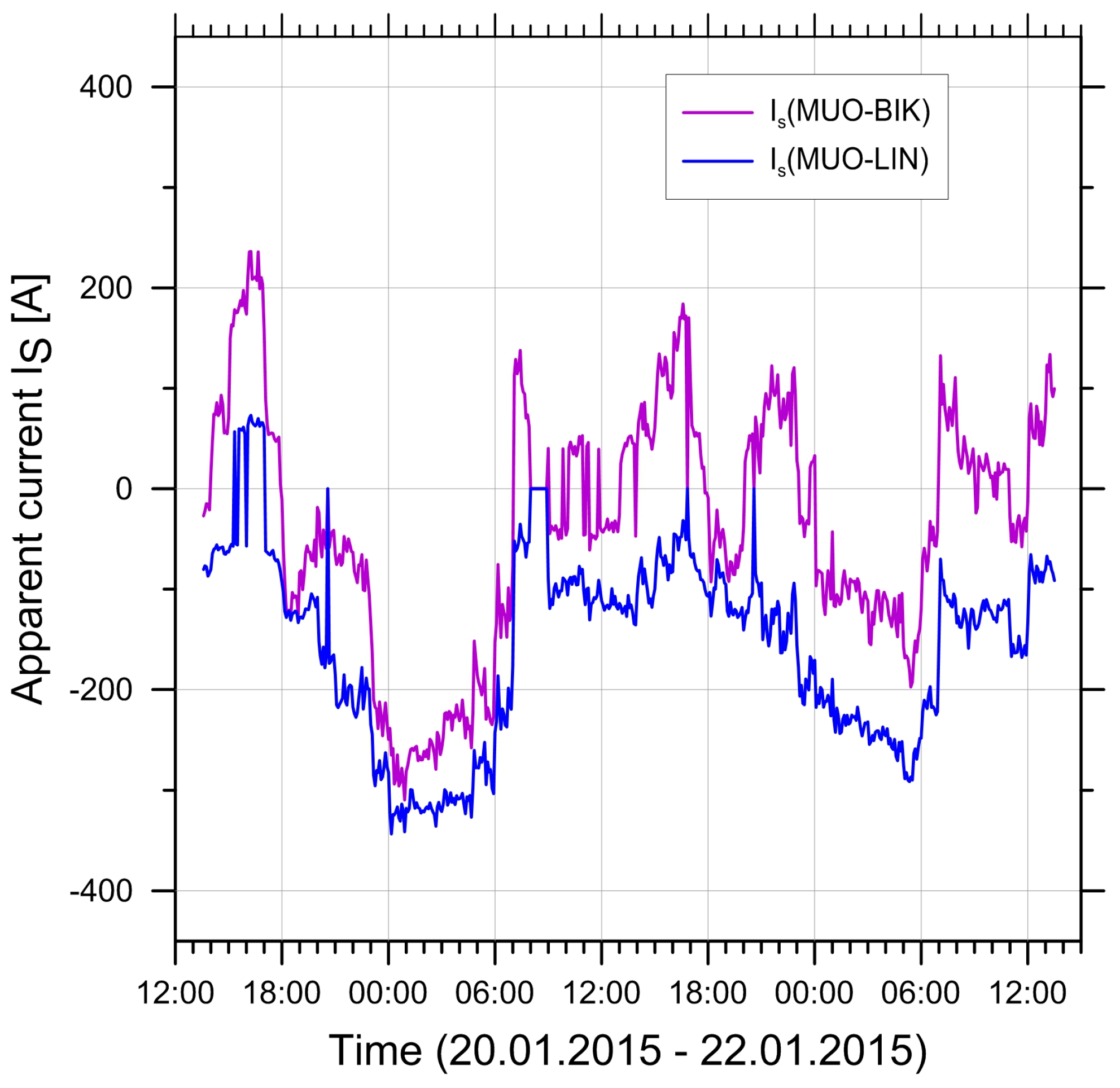
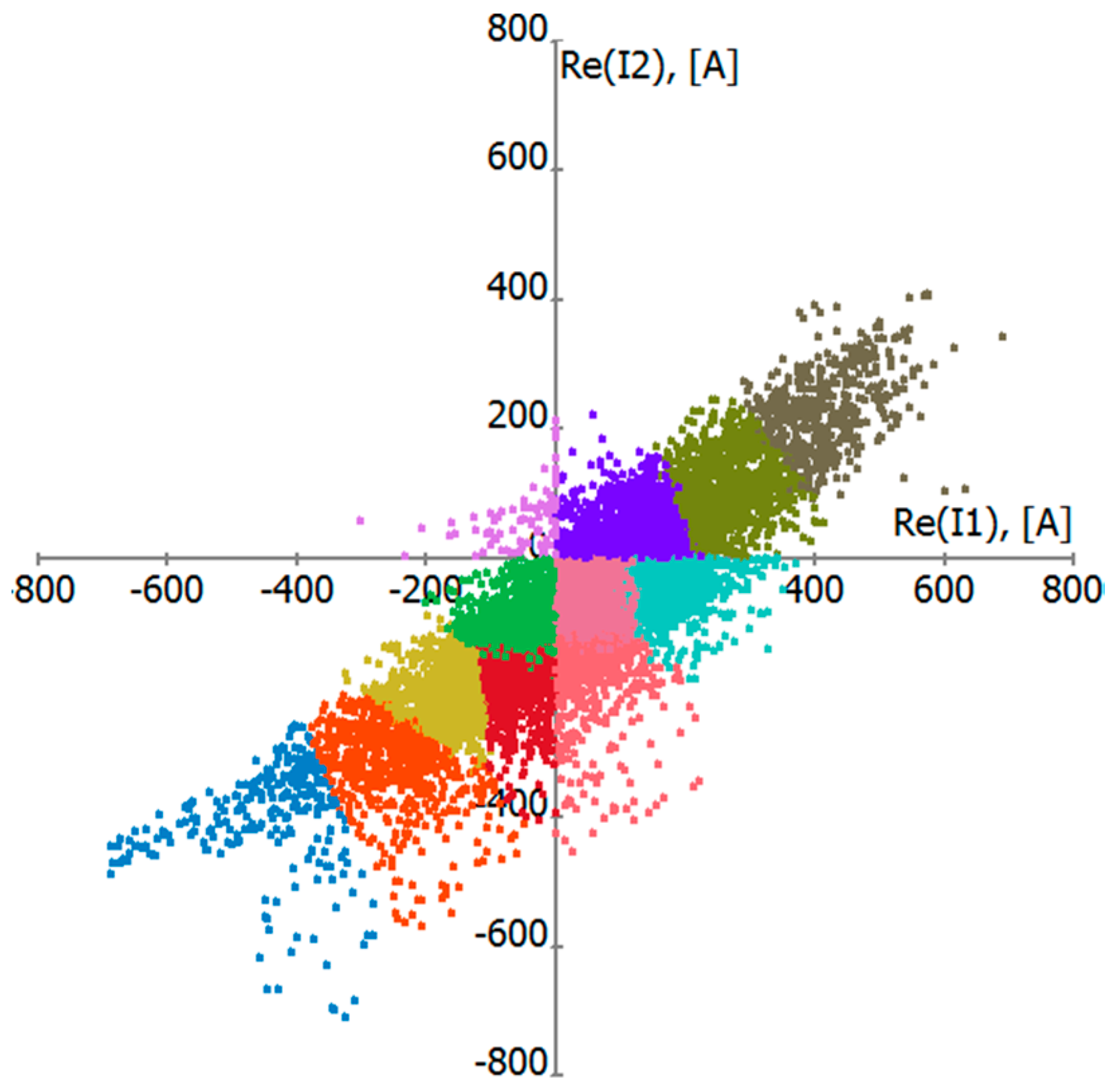

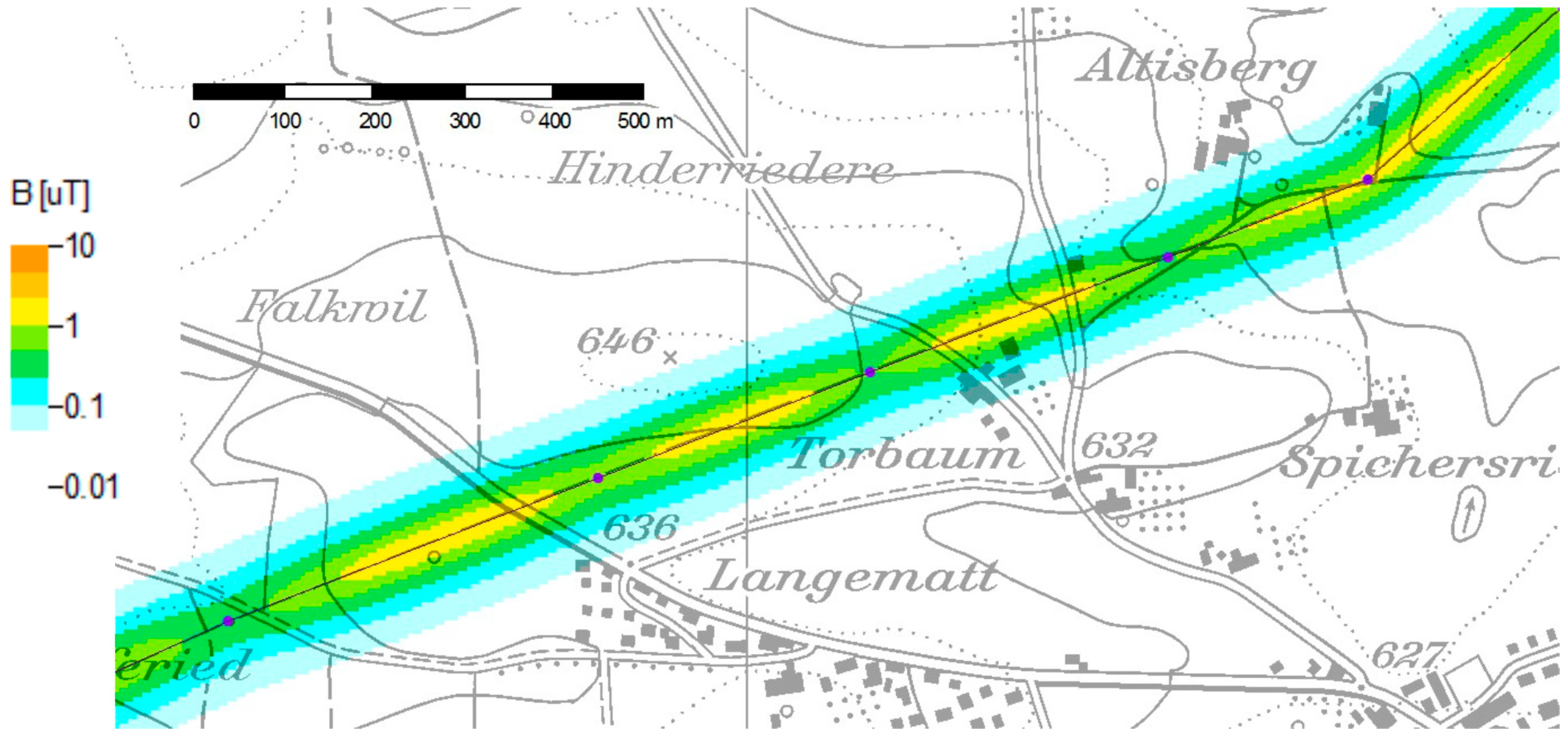
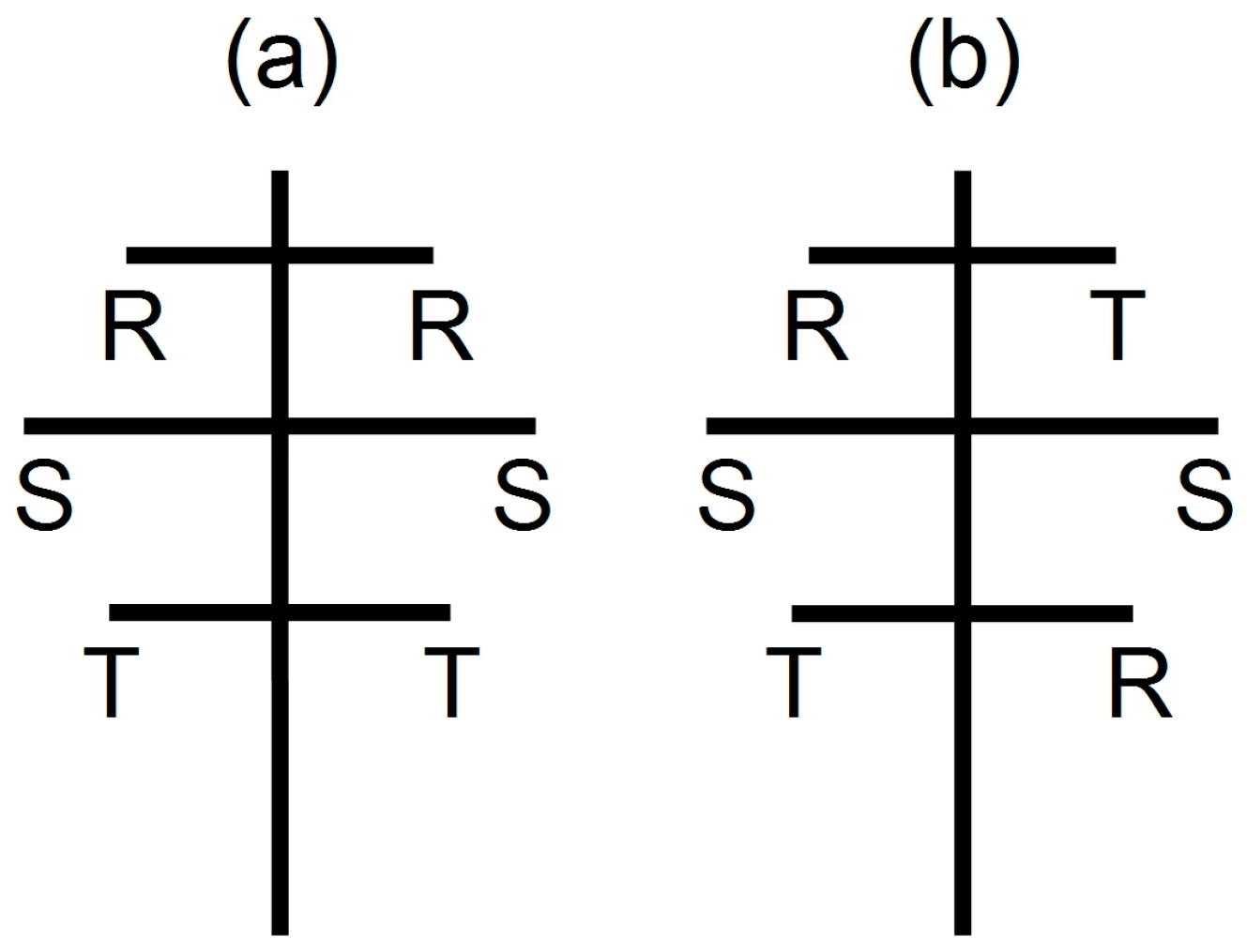
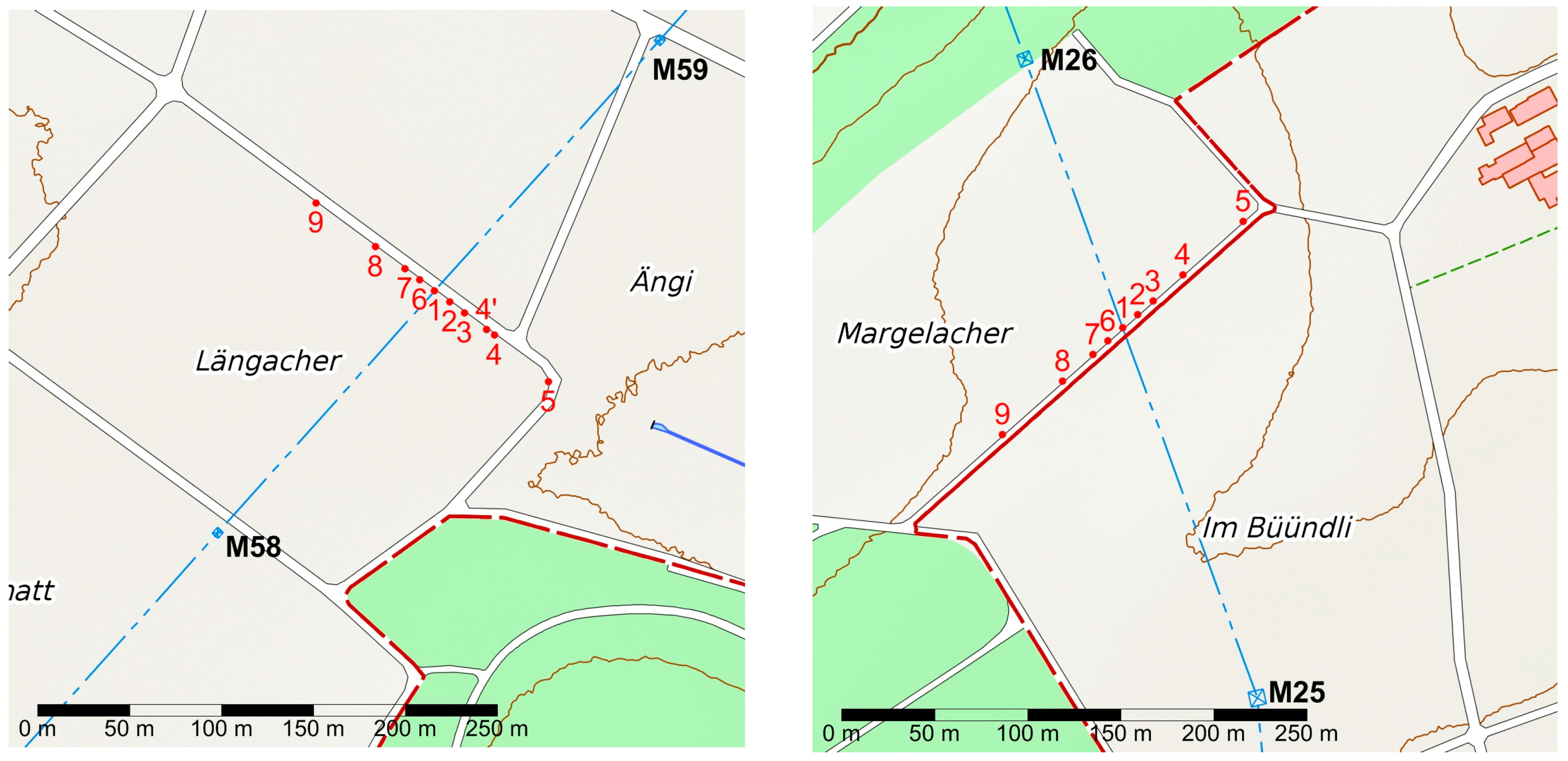
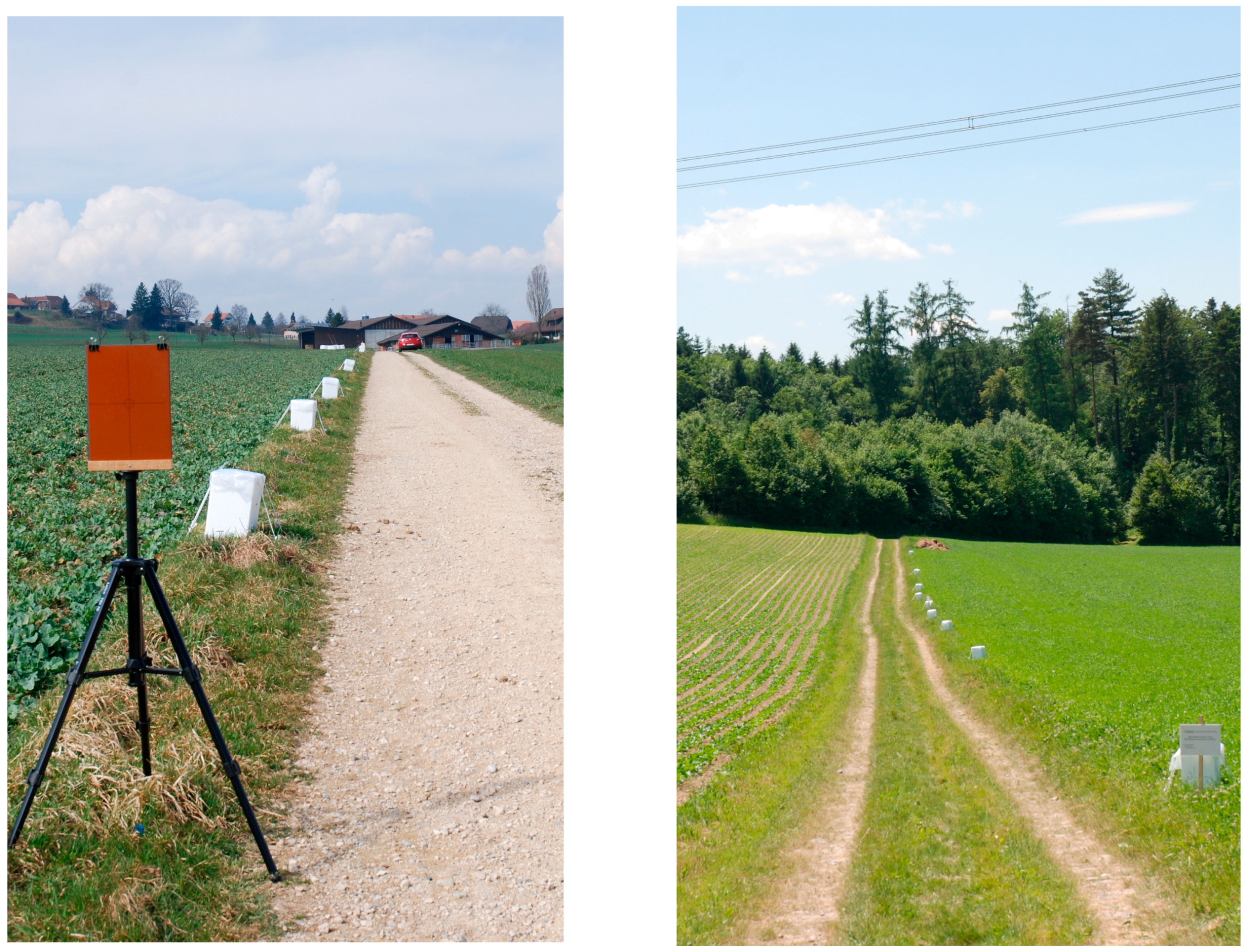
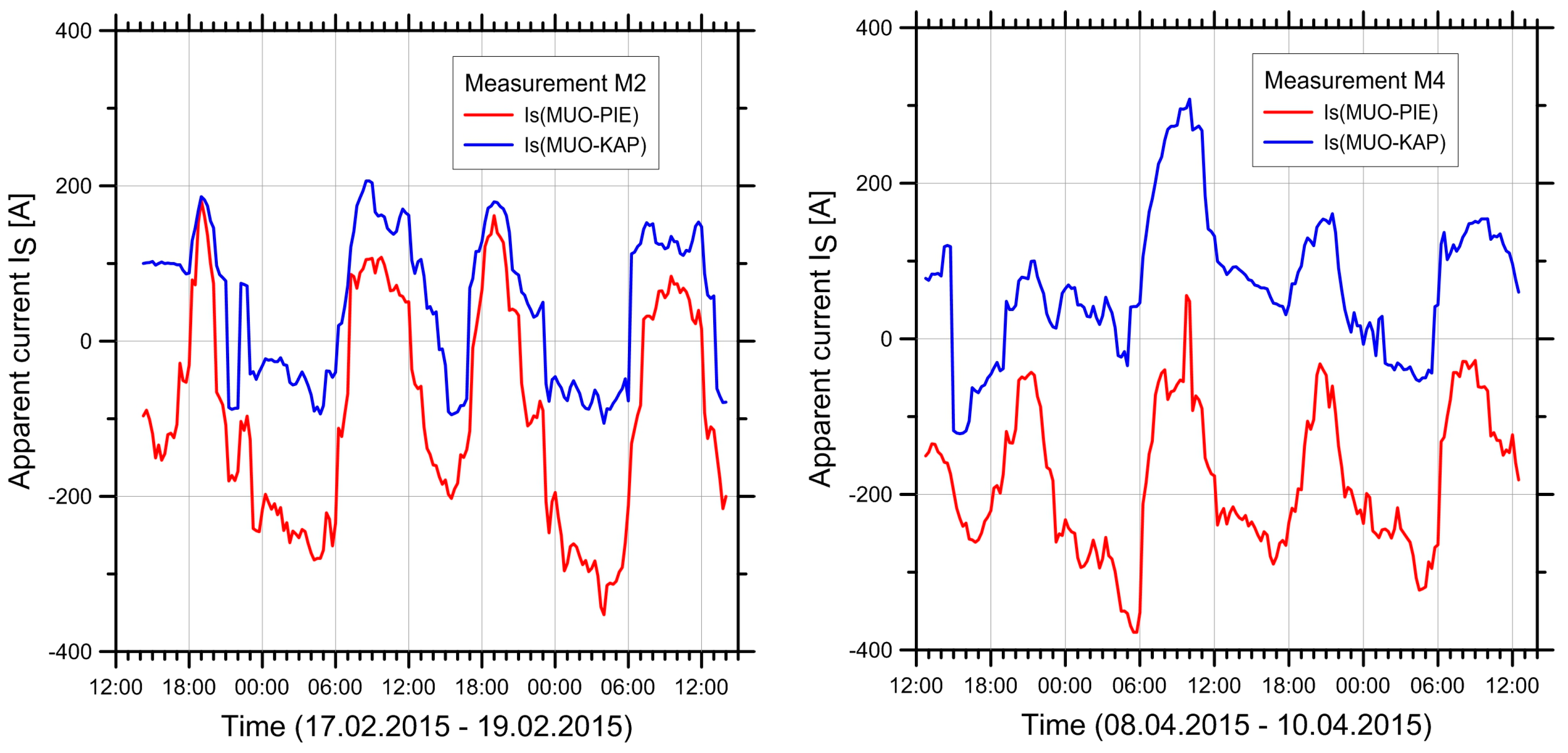

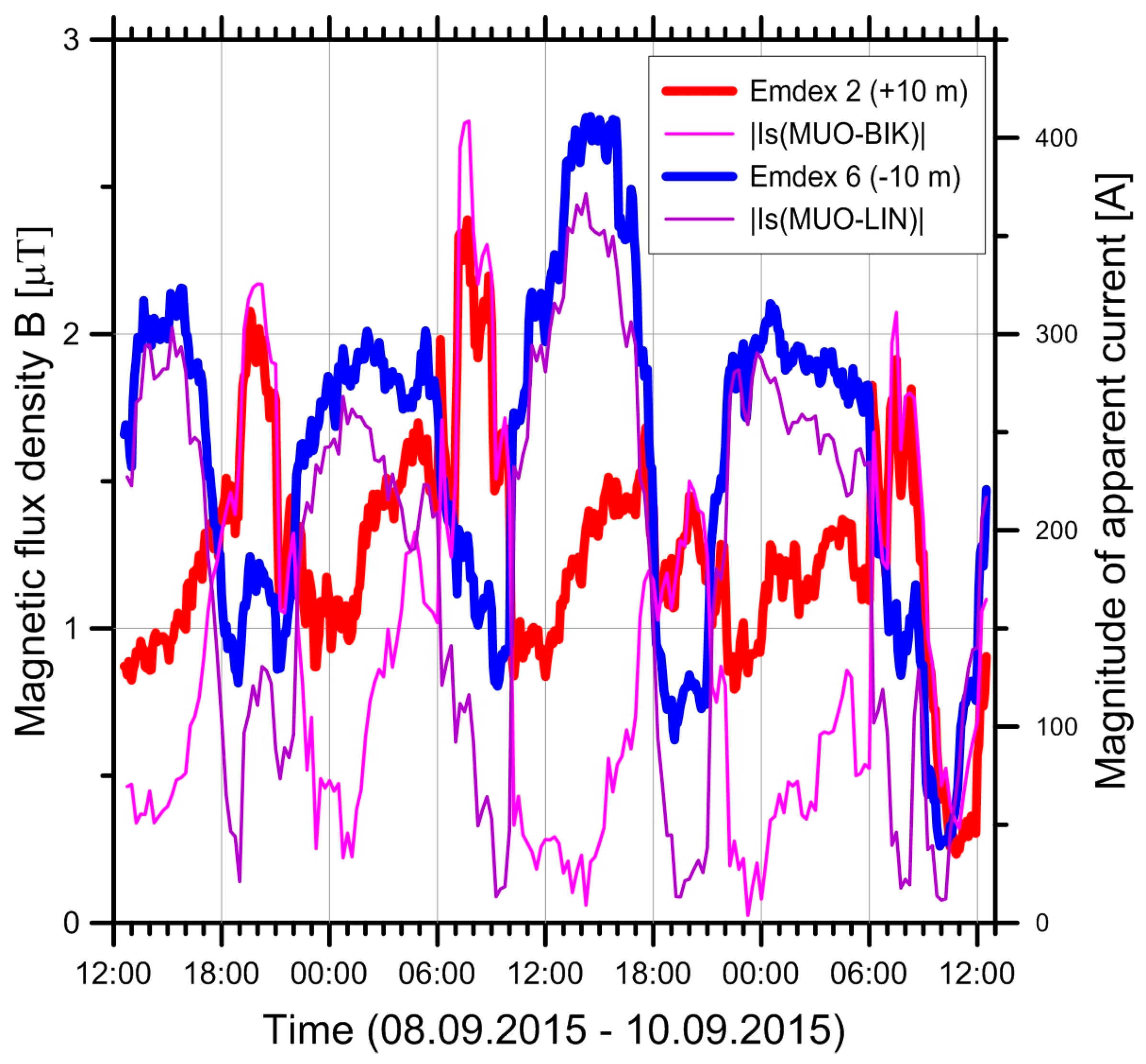

| Measurement Nr. | Site | Begin | End |
|---|---|---|---|
| M1 | Iffwil | 20 January 2015 13:30 | 22 January 2015 13:30 |
| M2 | Wiler | 17 February 2015 14:00 | 19 February 2015 14:00 |
| M3 | Iffwil | 24 March 2015 12:30 | 26 March 2015 12:30 |
| M4 | Wiler | 8 April 2015 12:30 | 10 April 2015 12:30 |
| M5 | Iffwil | 26 May 2015 14:00 | 28 May 2015 14:00 |
| M6 | Wiler | 2 June 2015 14:00 | 04 June 2015 14:00 |
| M7 | Iffwil | 7 July 2015 10:30 | 9 July 2015 10:30 |
| M8 | Wiler | 28 July 2015 11:00 | 30 July 2015 11:00 |
| M9 | Iffwil | 8 September 2015 12:30 | 10 September 2015 12:30 |
| M10 | Wiler | 15 September 2015 13:00 | 17 September 2015 13:00 |
| M11 | Iffwil | 27 October 2015 13:15 | 29 October 2015 13:15 |
| M12 | Wiler | 8 December 2015 14:00 | 10 December 2015 14:00 |
| Iffwil | Wiler | ||||
|---|---|---|---|---|---|
| Model A (for ) | DHM25 | −0.04 | 0.11 | 0.07 | 0.08 |
| Model B (for ) | −0.04 | 0.11 | 0.08 | 0.08 | |
| Model C (for ) | DHM5 | 0.02 | 0.09 | −0.01 | 0.08 |
| Model D (for ) | 0.02 | 0.09 | −0.01 | 0.07 | |
| Near Points, | Far Points, | |||||||
|---|---|---|---|---|---|---|---|---|
| Model A (for ) | Model B (for ) | Model A (for ) | Model B (for ) | |||||
| Site | ||||||||
| Iffwil | −0.11 | 0.08 | −0.12 | 0.07 | 0.03 | 0.13 | 0.03 | 0.12 |
| Wiler | 0.11 | 0.05 | 0.12 | 0.05 | 0.05 | 0.10 | 0.05 | 0.09 |
| Near Points, | Far Points, | |||||||
|---|---|---|---|---|---|---|---|---|
| Model C (for ) | Model D (for ) | Model C (for ) | Model D (for ) | |||||
| Site | ||||||||
| Iffwil | 0.01 | 0.04 | 0.01 | 0.04 | 0.03 | 0.12 | 0.04 | 0.12 |
| Wiler | −0.03 | 0.05 | −0.03 | 0.05 | 0.02 | 0.09 | 0.02 | 0.09 |
© 2017 by the authors. Licensee MDPI, Basel, Switzerland. This article is an open access article distributed under the terms and conditions of the Creative Commons Attribution (CC BY) license (http://creativecommons.org/licenses/by/4.0/).
Share and Cite
Bürgi, A.; Sagar, S.; Struchen, B.; Joss, S.; Röösli, M. Exposure Modelling of Extremely Low-Frequency Magnetic Fields from Overhead Power Lines and Its Validation by Measurements. Int. J. Environ. Res. Public Health 2017, 14, 949. https://doi.org/10.3390/ijerph14090949
Bürgi A, Sagar S, Struchen B, Joss S, Röösli M. Exposure Modelling of Extremely Low-Frequency Magnetic Fields from Overhead Power Lines and Its Validation by Measurements. International Journal of Environmental Research and Public Health. 2017; 14(9):949. https://doi.org/10.3390/ijerph14090949
Chicago/Turabian StyleBürgi, Alfred, Sanjay Sagar, Benjamin Struchen, Stefan Joss, and Martin Röösli. 2017. "Exposure Modelling of Extremely Low-Frequency Magnetic Fields from Overhead Power Lines and Its Validation by Measurements" International Journal of Environmental Research and Public Health 14, no. 9: 949. https://doi.org/10.3390/ijerph14090949
APA StyleBürgi, A., Sagar, S., Struchen, B., Joss, S., & Röösli, M. (2017). Exposure Modelling of Extremely Low-Frequency Magnetic Fields from Overhead Power Lines and Its Validation by Measurements. International Journal of Environmental Research and Public Health, 14(9), 949. https://doi.org/10.3390/ijerph14090949







